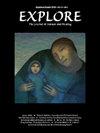Wet cupping therapy and acupuncture applications in migraine patients: A randomized controlled trial
IF 2.2
4区 医学
Q3 INTEGRATIVE & COMPLEMENTARY MEDICINE
引用次数: 0
Abstract
Aim
Although there are numerous complementary treatments for migraine, comparisons among themselves are relatively rare. This study aimed to investigate and compare the effectiveness of wet cupping therapy (WCT) and acupuncture applications in treating migraine patients.
Materials and method
This was a randomized controlled clinical trial conducted between 01.03.2022 and 01.10.2023 in the Traditional and Complementary Medicine Center of a tertiary hospital. Patients diagnosed with migraine were included in the study and randomized into three arms. The WCT group received cupping 3 times, once a month. The acupuncture group received 10 sessions of acupuncture once a week. The waiting list was assigned as the control group. VAS and MIDAS scales were applied to all groups at the beginning and the end of the treatment, and the results were compared.
Results
All three groups were similar regarding age and sex. Migraine Disability Assessment Scale (MIDAS) and Visual Analogue Scale (VAS) pain scores decreased significantly in both treatment groups after the applications, while they remained similar for the same period in the control group. Additionally, the post-treatment values of MIDAS and VAS in both the WCT and acupuncture groups were significantly lower compared to controls, while they were similar when compared in between.
Conclusion
Both of these applications were found to be similarly effective in improving disability status and pain intensity in patients with migraine.
湿罐疗法和针灸在偏头痛患者中的应用:一项随机对照试验
目的:尽管有许多治疗偏头痛的辅助疗法,但它们之间的比较相对较少。本研究旨在探讨和比较湿罐疗法(WCT)与针刺治疗偏头痛的疗效。材料与方法随机对照临床试验于2022年3月1日至2023年10月1日在某三级医院传统与补充医学中心进行。诊断为偏头痛的患者被纳入研究,并随机分为三组。WCT组接受火罐治疗3次,每月1次。针刺组接受10次针刺,每周1次。等候名单被指定为对照组。在治疗开始和结束时对各组患者进行VAS和MIDAS评分,并对结果进行比较。结果三组患者年龄、性别相近。应用后,两组偏头痛残疾评估量表(MIDAS)和视觉模拟量表(VAS)疼痛评分均显著下降,而对照组在同一时期保持相似。此外,WCT组和针刺组的MIDAS和VAS治疗后值均显著低于对照组,而两者比较相似。结论两种方法在改善偏头痛患者的残疾状况和疼痛强度方面具有相似的效果。
本文章由计算机程序翻译,如有差异,请以英文原文为准。
求助全文
约1分钟内获得全文
求助全文
来源期刊

Explore-The Journal of Science and Healing
医学-全科医学与补充医学
CiteScore
3.00
自引率
8.30%
发文量
179
审稿时长
25 days
期刊介绍:
EXPLORE: The Journal of Science & Healing addresses the scientific principles behind, and applications of, evidence-based healing practices from a wide variety of sources, including conventional, alternative, and cross-cultural medicine. It is an interdisciplinary journal that explores the healing arts, consciousness, spirituality, eco-environmental issues, and basic science as all these fields relate to health.
 求助内容:
求助内容: 应助结果提醒方式:
应助结果提醒方式:


